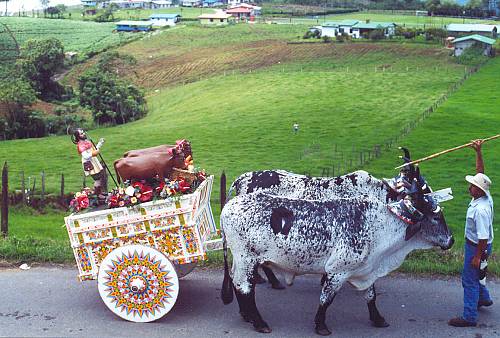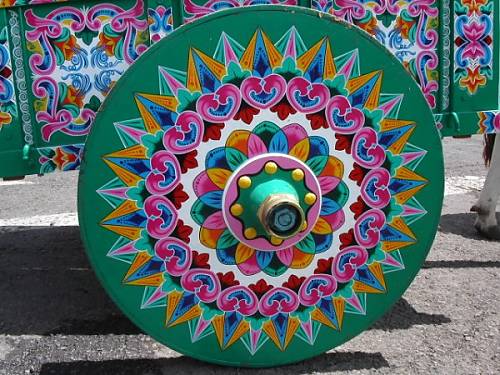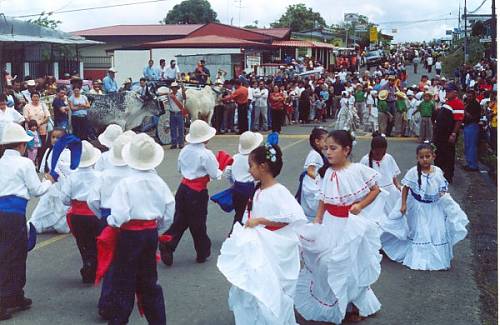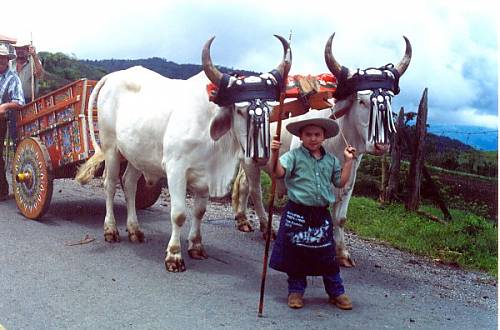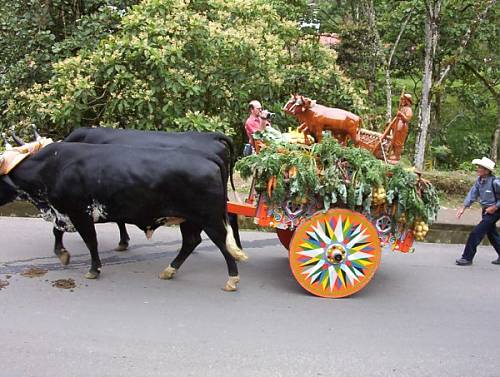Oxherding and oxcart traditions in Costa Rica
Inscribed in 2008 (3.COM) on the Representative List of the Intangible Cultural Heritage of Humanity (originally proclaimed in 2005)
The traditional oxcart, or carreta, is the product of Costa Rica’s most famous craft. Dating from the mid-nineteenth century, oxcarts were used to transport coffee beans from Costa Rica’s central valley over the mountains to Puntarenas on the Pacific coast, a journey requiring ten to fifteen days.
The oxcarts used spokeless wheels, a hybrid between the disc used by the Aztec and the spoked wheel introduced by the Spaniards, to cut through the mud without getting stuck. In many cases, oxcarts were a family’s only means of transport; they often served as a symbol of social status.
The tradition of painting and decorating oxcarts started in the early twentieth century. Originally, each region of Costa Rica had its own particular design, enabling the identification of the driver’s origin by the painted patterns on the wheels.
By the beginning of the twentieth century, flowers, faces and miniature landscapes began to appear beside patterns of pointed stars, and to this day annual contests reward the most creative artists in this tradition. Each oxcart is designed to make its own ’song’, a unique chime produced by a metal ring striking the hubnut of the wheel as the cart bumped along. Once the oxcart had become a source of individual pride, greater care was taken in their construction, and the highest-quality woods were selected to make the best sounds. Today’s colourful and richly decorated carretas bear little resemblance to the original rough-hewn, rectangular, caneframed vehicles covered by rawhide tarps. While in most regions of Costa Rica trucks and trains replaced oxcarts as the main means of transport, the carretas remain strong symbols of Costa Rica’s rural past, and still feature prominently in parades and in religious and secular celebrations.
Since oxcarts have become obsolete as means of transport, there is a decreasing demand for them, which means that the number of artisans who possess the training to manufacture and decorate oxcarts has strongly declined over the past decades.

